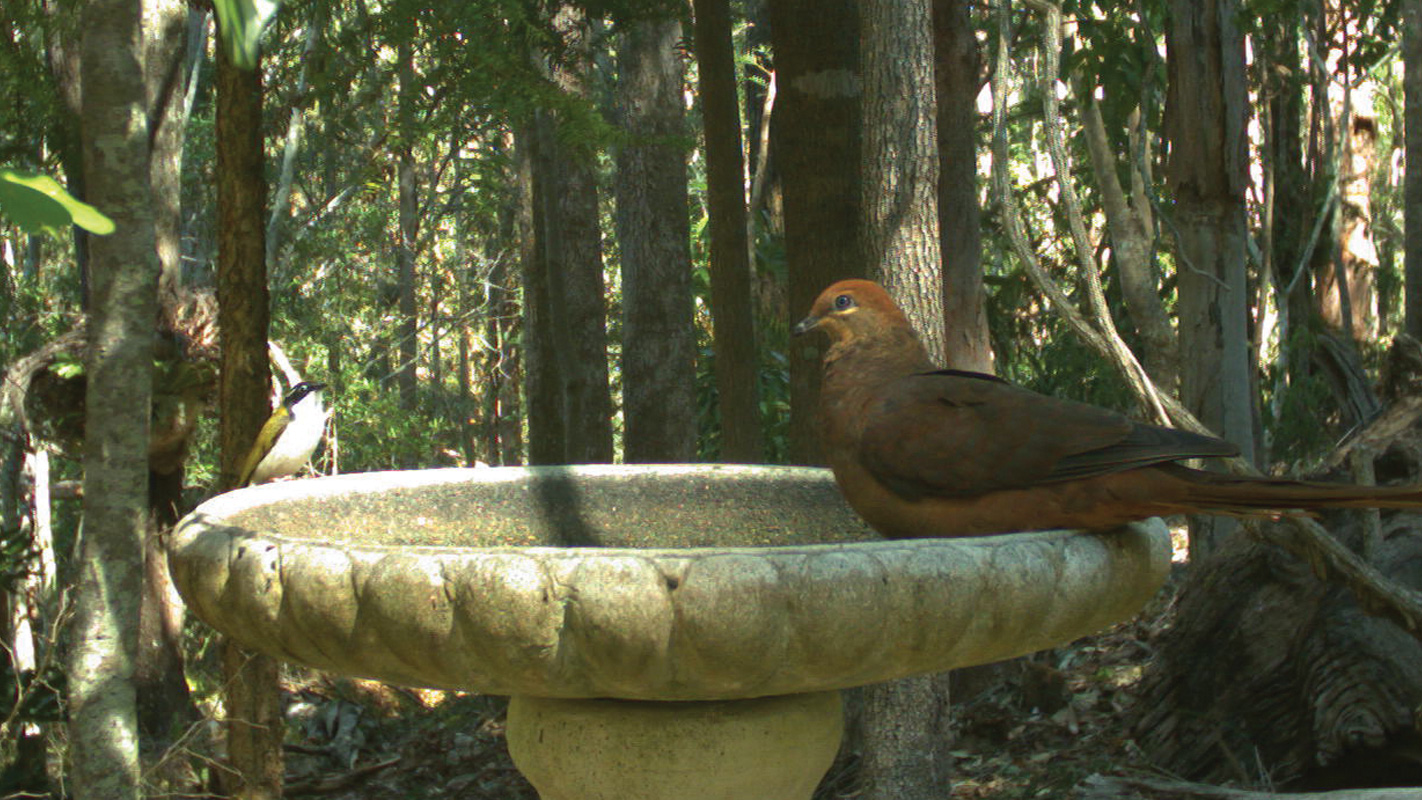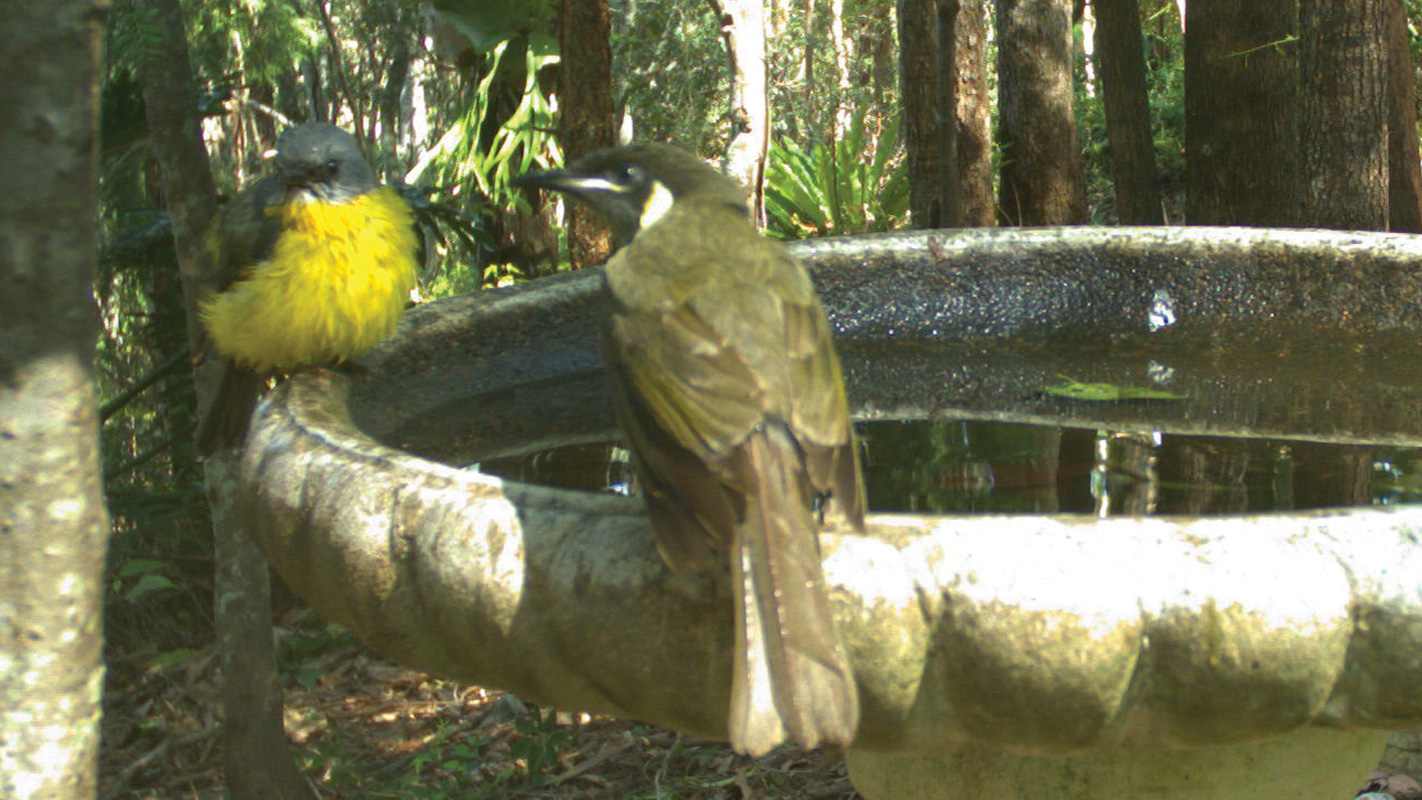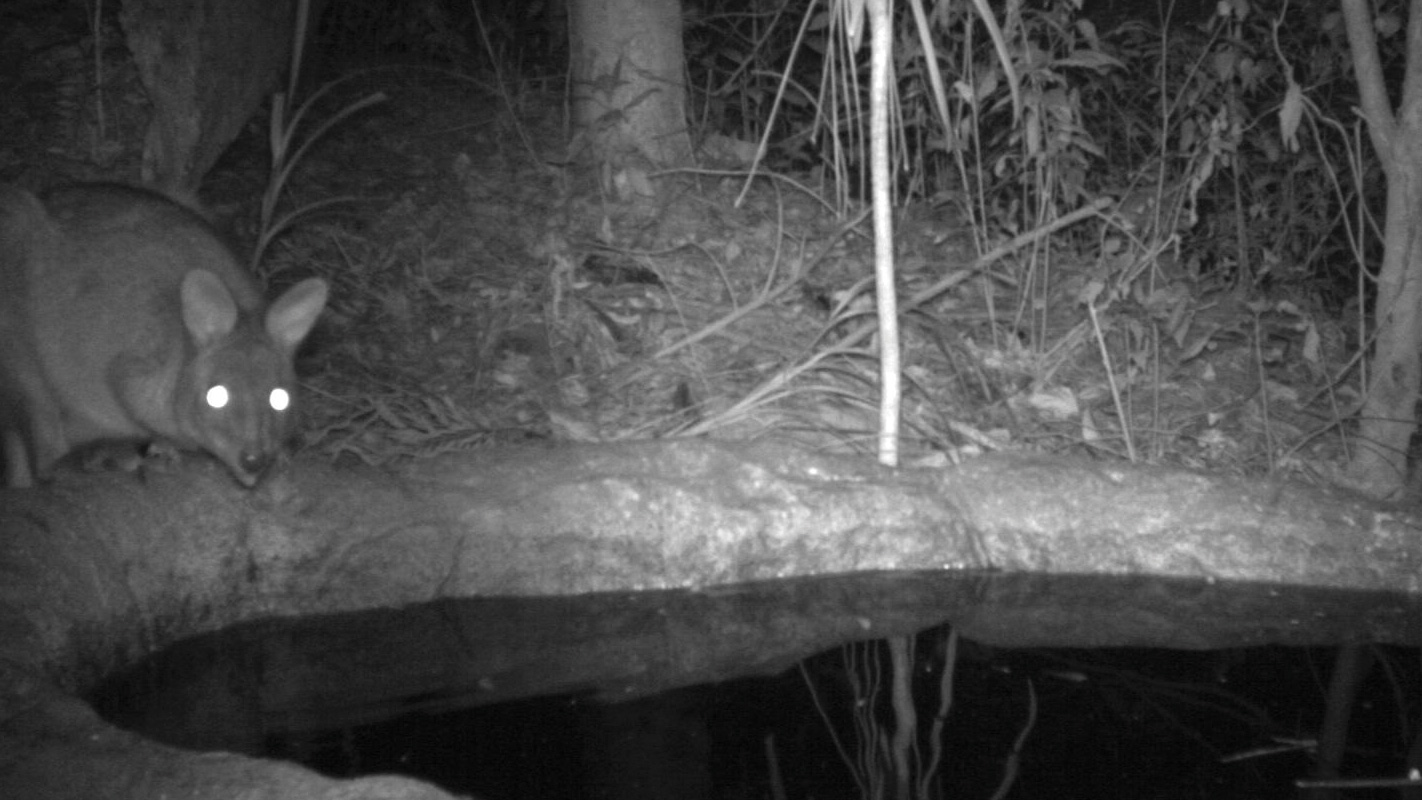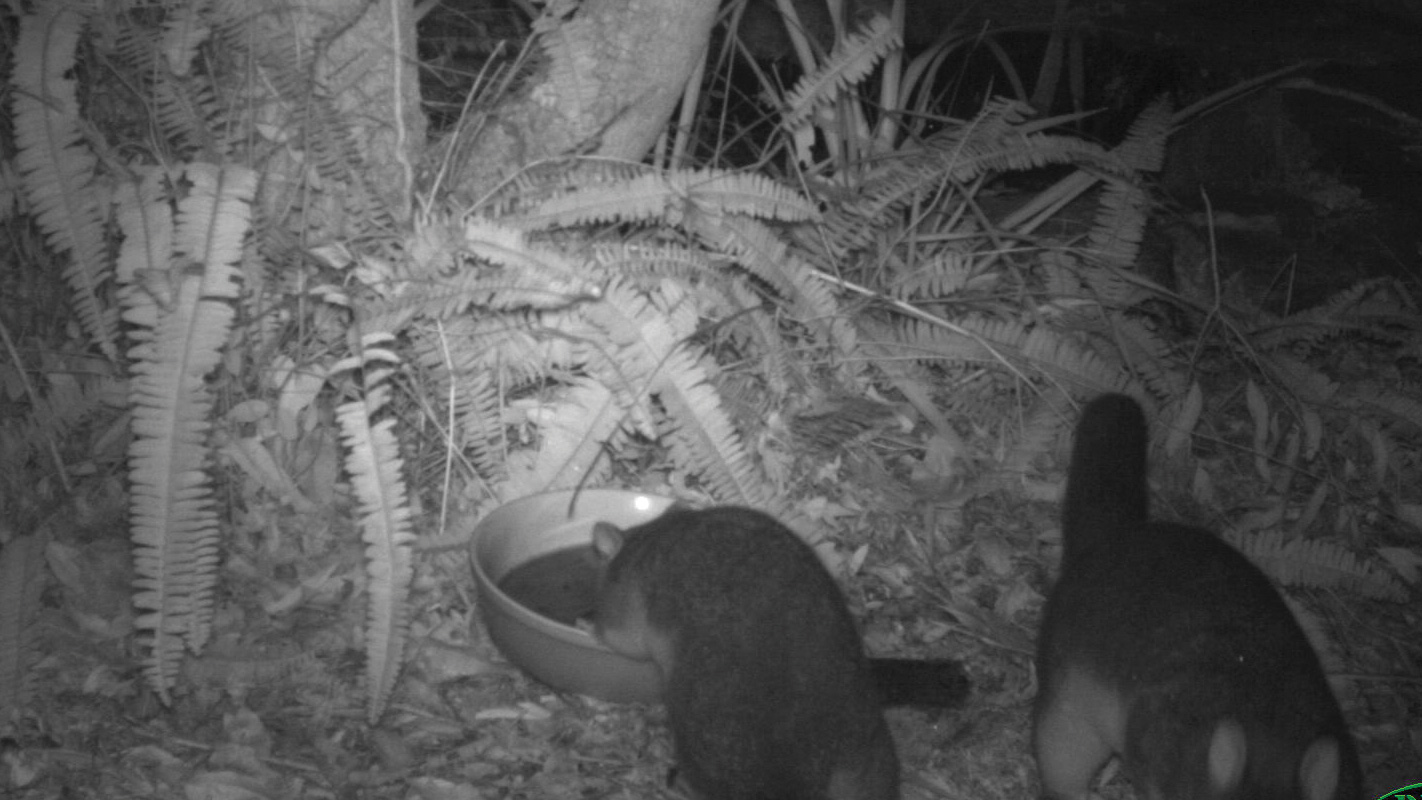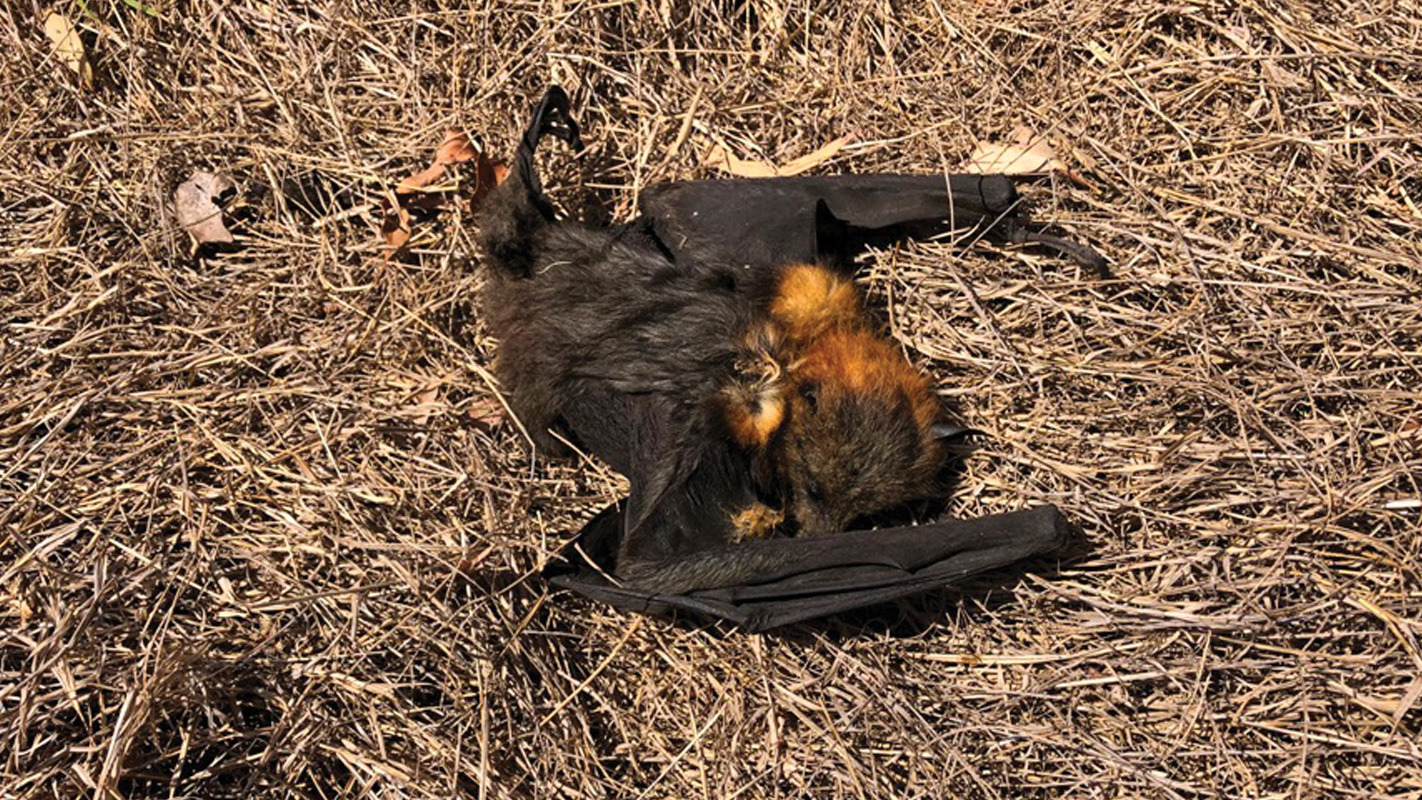Most Land for Wildlife members, especially in the Lockyer, are seeing first-hand the grip of drought on our wildlife and their habitats. Drought is a normal part of living in Australia, it is not easy, but it is normal. We also must acknowledge that our current climate is different to the recent past. Southeastern Australia is undergoing a large-scale drying trend and has been since national rainfall records started in 1900. Plus, our continent has warmed by 1°C since 1910.
The question is, as Land for Wildlife members who care about our wildlife and ecosystems, what can we do? This article looks how wildlife are coping with, or trying to, this drought, and what we can do to help, albeit in small ways.
Feeding Wildlife
The Land for Wildlife program generally does not suggest feeding wildlife, instead we recommend conserving and restoring high quality habitat for wildlife and encourage the complexities of nature to play out. However, in times of drought or other extreme weather events, assisting wildlife in small ways can sometimes help them survive tough times. This is especially applicable in highly modified landscapes that no longer provide a natural suite of habitats for wildlife.
If you choose to feed wildlife, we recommend purchasing correct foods and offering them in such a way that does not place the recipient fauna in a position of danger. Make sure your pets cannot access wildlife feeding/watering points and be aware that pest animals may visit if you start supplementary feeding. Both pets and pest animals could harm wildlife that come to feeding/watering points.
Food should be suited to the native animals such as pellets for macropods, possums and bandicoots and can be obtained from reputable suppliers. Never put out bucket loads of food, instead scatter food around so that wildlife do not become reliant on us. Never feed bread, sugar water or mince meat to wildlife.
Extensive research presented in Darryl Jones’ book indicates that responsible feeding of wildlife can assist wildlife through difficult periods such as drought. Responsible feeding means providing appropriate fresh food, maintaining good feeder hygiene and feeding intermittently or ceasing feeding when good times return.
The feeding suggestions provided here are for extremely dry times, like this summer, and may give our wildlife a helping hand. Outside of drought, please only supply fresh clean water in diverse ways on your property for wildlife. The best thing we can do for our wildlife is to protect bushland and restore degraded ecosystems.
Nectar-feeding Birds
These birds (e.g. honeyeaters, lorikeets, friarbirds) are not getting ample nectar or pollen in dry bushland areas because the trees are stressed and are conserving their resources; thus, reducing their nectar and pollen production. Many honeyeaters are dying of starvation or are stressed by hunger, which can make them more susceptible to diseases. It can be difficult to see how poor a bird’s condition is because their feathers often mask their slimness. Over the past few months, we have found lorikeets and honeyeaters that have simply starved and they have no fat around their breastbone. Helping our nectar-feeding birds can be difficult as they ultimately require a landscape of resources to survive. However, gardens that are mulched or watered possibly provide more nectar and pollen during these dry times. A powdered honeyeater mix that must be watered down can be purchased and provided in accordance with product instructions.
Flying Foxes
Our poor flying foxes are coming into care in record numbers, often with young. The recovery rate of young drought-stressed flying foxes is very low. Flying foxes are extremely reliant on a high sugar diet through nectar and fruit. They primarily get their food from flowering eucalypts and fruiting native trees. When they can’t find enough high-sugar food to eat, they perish. Drought is also the time in which flying foxes will try to obtain food from more dangerous sources, such as low-hanging fruit or trees in backyards with dogs, which can lead to more unwanted contacted with humans.
Some Land for Wildlife members are making apple or fruit wreaths for flying foxes. These are simple wreath-type arrangements where fruit such as apples are threaded onto sturdy wire and lifted as high as possible into trees or other structures. It is basically an aerial fruit wreath or feeding tray for flying foxes.
Koalas
Unfortunately, many Koalas are coming into care in poor condition. During drought, the eucalypt leaves that Koalas eat often lack the moisture and oils required by Koalas to keep them healthy. Koalas often need to drink water during drought and fire and unfortunately, we have seen many fires here in the Lockyer this summer. Place fresh water out for Koalas in sturdy, clean dishes on the ground. Do not offer Koalas water from raised containers (i.e. water bottles) as they can drown.
Echidnas
Some echidnas have been found dead on Land for Wildlife properties in the last few months and it is probably due to the lack of surface water. Echidnas primarily consume ants and termites and need regular amounts of water to aid digestion. On the sandy soils where the termites live in the Lockyer there is little to no surface water. Again, the provision of fresh water in sturdy containers on the ground may help echidnas.
Frugivores
Fruit-eating wildlife such as fruit-doves, parrots and possums may benefit from the provision of fresh chopped fruit in a clean dish, ideally well off the ground.
Providing Water
The provision of fresh, reliable water for fauna, especially during drought, is one the easiest things landholders can do to help wildlife. Ideally, water sources should be varied – dishes on the ground, above the ground and dishes full of water with large gravel so that invertebrates can drink.
Water down low on the ground may be used by echidnas, macropods, lizards and bandicoots, whereas water up high such as in bird baths or hanging containers may be used by possums, gliders, birds, and climbing snakes and lizards.
Always remember to provide an escape or egress for wildlife from any water container to save them from accidentally drowning. A log, branch, heavy wire mesh or shade cloth draped into the container will provide easy egress options for wildlife. Dishes on the ground with rocks or gravel make it possible for invertebrates such as bees, wasps and butterflies to take a drink without falling in.
Many landholders have come up with ingenious options to keep their wildlife dishes topped up, such as inverting a two litre drink bottle. If you have a clever idea for managing your bird baths or fauna water dishes, please let us know.
Safety First
It is important to put your safety first when providing any support to wildlife. Stressed wildlife can be dangerous, and they do not know you are trying to help them. Do not encourage wildlife onto or into your house. Do not touch dead or dying wildlife. Contact a registered wildlife carer or the RSPCA if an injured or sick animal comes into your care.
Martin Bennett
Land for Wildlife Officer Lockyer Valley Regional Council &
Deborah Metters
Land for Wildlife Regional Coordinator
Reference: Jones D (2018) The Birds at My Table: Why we feed wild birds and why it matters. NewSouth Publishing.

